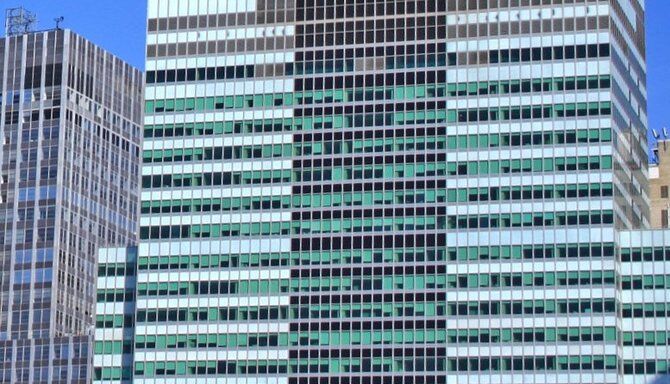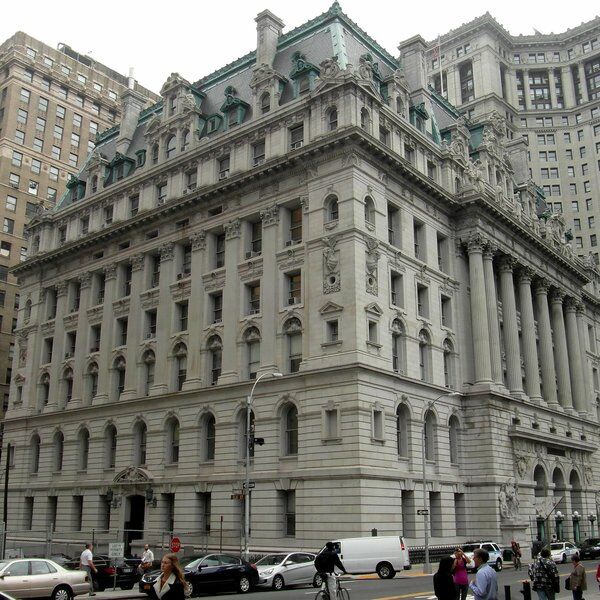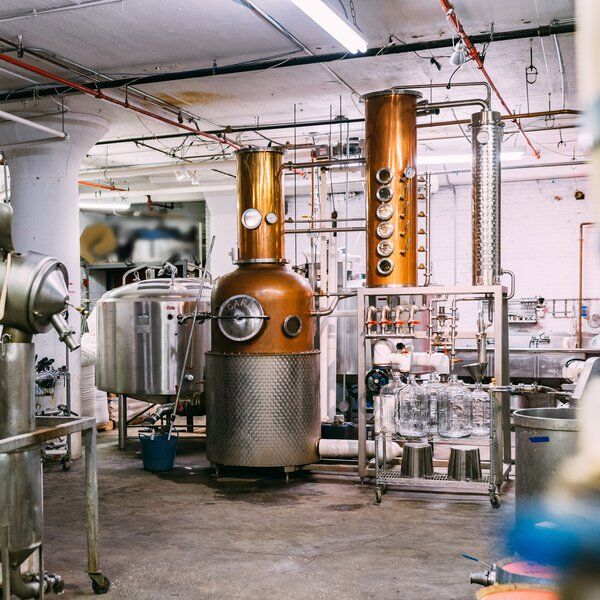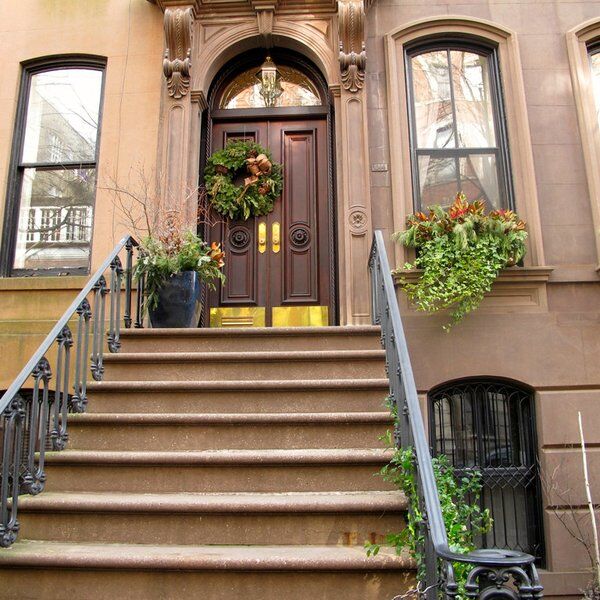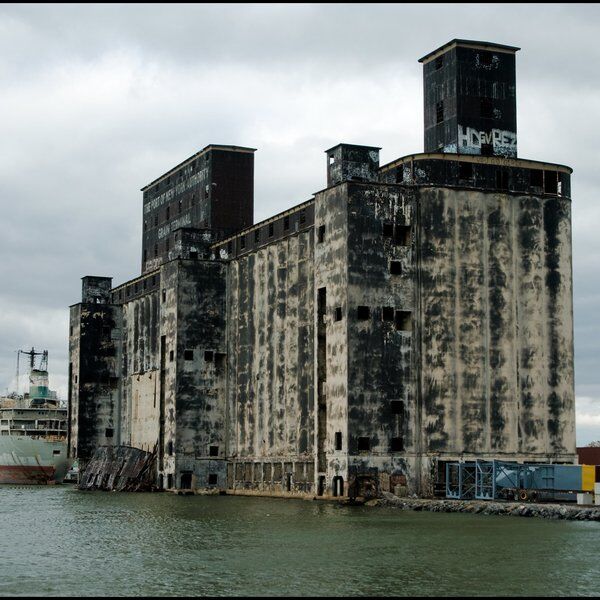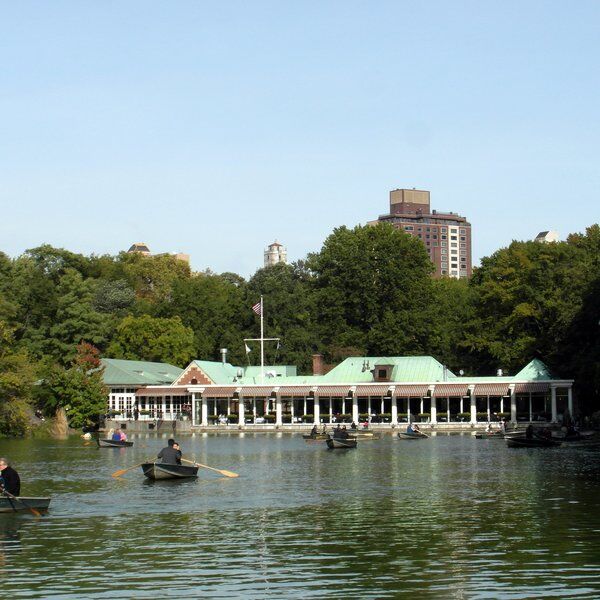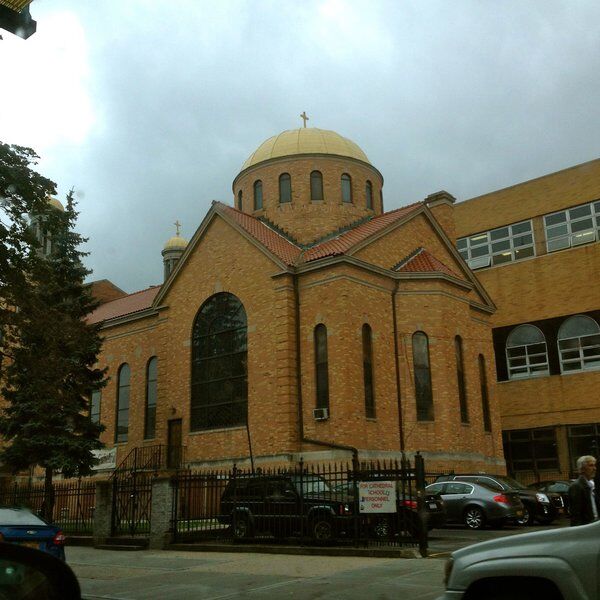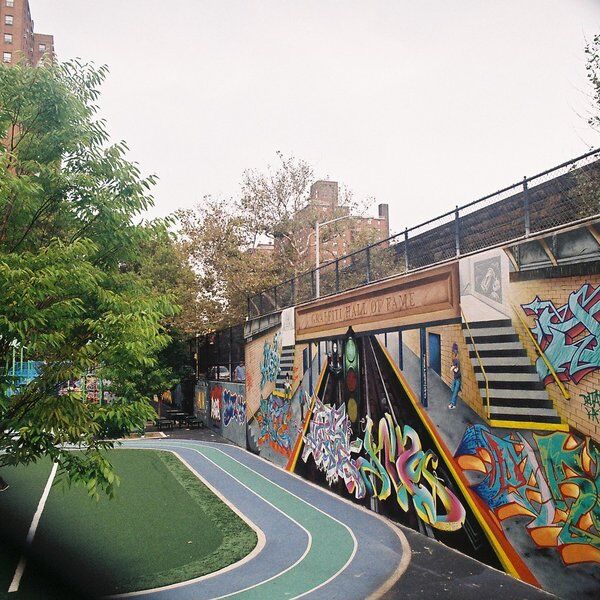The architects of 2 Broadway seemingly had one thing in mind when designing this 1958-9 build: maximising the space inside. It occupies the maximum amount of mass and volume allowed for a building of its height under the regulations of the time. Since then the regulations have changed. To build something like it in NYC today would be to break the law.
A Brief Prehistory Of 2 Broadway
Prior to 1958, the lot had been occupied by the New York Produce Exchange since 1884. In the late 19th/early 20th centuries the produce exchange was in high demand. It had a membership of 3,000 people and, in 1900, conducted $15mil of business a day.
As the century progressed, however, the exchange fell further from the action. By the 1950s its membership had shrunk to a sixth of its former glory, and, in 1953, plans to replace it with a new building were formed.
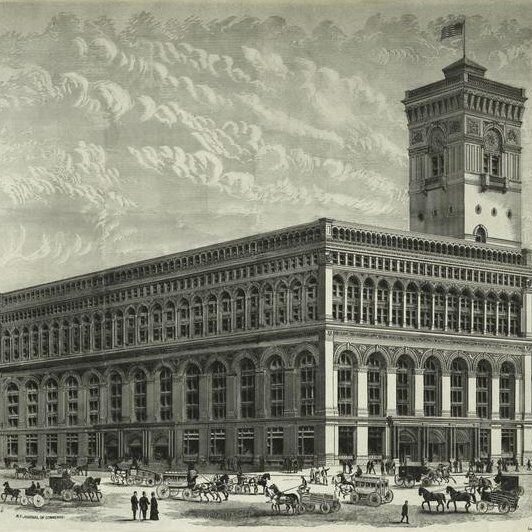
The Difficult Development of 2 Broadway
Between 1953-58 the development passed from development firm to development firm, seeing several redesigns along the way. Somewhere in all this it lost a storey, the original plans having had it at 33 floors high.
Finally, in 1957, it landed in the hands of the Uris Buildings Corporation. They had it redesigned one final time and then hurriedly began selling offices. Half of the building was rented out by the Summer of that year, leaving them little choice but to actually build it.
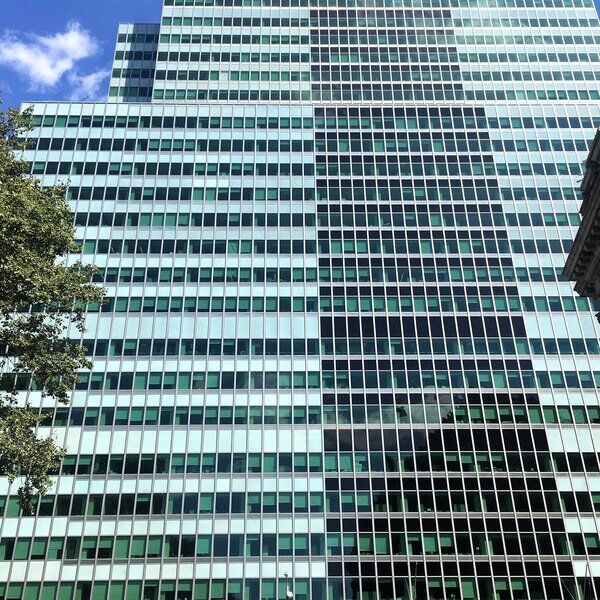
2 Broadway Opens
When it opened in 1959 it was the 2nd largest skyscraper in Manhattan's Financial District. This did not win it much praise from the architectural world, however, an Architectural Forum Editor having compared it to 'a great piece of magnified and glass-filled chain mail.'
To begin with it was largely occupied by financial firms and was at least somewhat successful. 1977 saw it pass into the hands of Olympia & York as part of a $50mil transaction, but the decades that followed saw it fall on harder times.
The 1990s Financial Crisis And 2 Broadway
During the recession of the 1990s the majority of the building became vacant, 60% of its interior not being rented in 1992. Remarking on this, the NY Times called it a 'stark illustration of the neighbourhood's struggling office market.'
2 Broadway Is Renovated
Despite this, ZAR Realty purchased the building in 1995 and, together with the Metropolitan Transport Authority (a major occupant at the time), they began a major and shambolic 1999 renovation, adding, among other things, a facade of blue and green tinted glass.
The original budget for this was $135mil, but delays and rumoured corruption saw this rise to $499mil by the time it was completed, in 2003. This prompted one reporter to say, '2 Broadway stands as a monument to what's wrong with the MTA and how it handles the publics money.'
At the same time, the renovation did receive some mitigated praise. The A/A Guide to NYC called the building's new exterior, 'sleek' and 'elegant', although it did add that the structure beneatn remained 'banal'.

2 Broadway Today
Since then, the MTA has gradually moved more and more of its operations into the building. Walk down Lower Broadway and you'll be sure to see its blue and green tinted glass twinkling dubiously over nearby Bowling Green Park.

One More Thing...
The oldest part of the building is approximately 360 million years old, if you can call a fossilized coral reef embedded in a gray marble slab part of the building. This carboniferous treasure can be seen on display in 2 Broadway's lobby.
Interested in finding more places like this? Try one of our New York City Scavenger hunts - untangle cryptic clues as a team, as you are taken on a journey to the most unique, unusual and bizarre corners of NYC.
